
On a cold December night in Boston, more than 150 years ago, a crowd pushed their way through the doors of Tremont Temple to take their seats for a once-in-a-lifetime event. Next door in his suite at the Omni Parker House, Charles Dickens stared at his reflection in a large mirror. The 55-year-old British author made the final preparations, knowing that just steps away a large crowd buzzed with excitement over his presence in their beloved American city. Just outside of his room were security guards, ensuring that Mr. Dickens would get to his performance undisturbed. Having achieved global fame for his literary prowess, Dickens was recognized wherever he went, if not for his writing, then for his bohemian dress and characteristic twinkle in his eye.
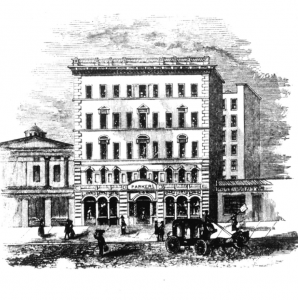
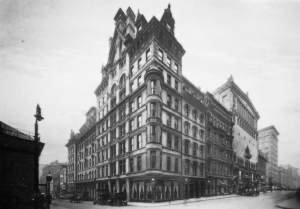
His Home Away from Home
When Charles Dickens took the stage at Tremont Temple in 1867, it was the second time the author had ventured across the pond to the United States. The first time was in 1842. On that trip, the young author was less than enamored with what he found, believing the United States to be just as oppressive and discriminatory as the societies which filled the pages of his novels like Oliver Twist. There was but one city which Mr. Dickens took a liking to, and that was the city of Boston. When he returned in 1867, some twenty-five years later, Mr. Dickens decided to make Boston his “home base” as he set out on a five-month reading tour in America. His home away from home occupied two suites at the Omni Parker House.
Reciting a Christmas Tradition
Dickens was welcomed with a “hearty and prolonged applause,” before he even spoke a word. Though he was in the final years of his life and taken with an illness, he is said to have “walked upon stage with a rapid step, a calm and self-possessed air, as of one quite at home.” For each performance the stage was fitted with a maroon backdrop, a desk where he could rest his arm, a carafe of water, and gas lamps to illuminate the performance. When the applause finally dissipated, Dickens cracked open his copy of A Christmas Carol, and began to recite the story, rarely looking at the text, as he had it committed to memory.
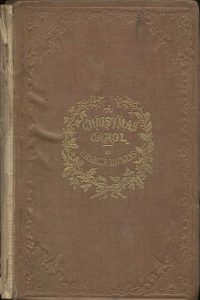
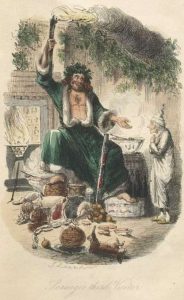
Charles Dickens was not only a prolific writer, but he was also a trained actor. In the 1800s, it was not unusual for an author to give a public reading of their own work. Telling stories, especially Christmas stories, as oral tradition traces back centuries. But to see the Charles Dickens tell a story – well now that was something special. Dickens was said to adopt different voices and contort his face and body, moving seamlessly from character to character. He was as convincing an Ebenezer Scrooge as he was a Tiny Tim, raising his voice several octaves to land the final words of the novella, and tugging at the heart strings of the crowd of some two-thousand audience members as he exclaimed “God bless us, everyone.” According to those who were lucky enough to attend Dickens’ performance at Tremont Temple, it was impossible to listen to the story without emotion, “and for very many present, to listen without tears.” His performance “brought out so many pocket handkerchiefs that it looked as if a snowstorm had gotten into the hall without tickets.”
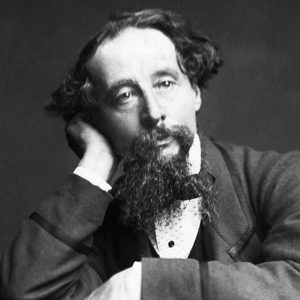
Shaping History
When Dickens performed his beloved story at Tremont Temple, Christmas was not yet recognized as a national holiday. In the 1600s when the Puritans arrived, they outlawed Christmas, believing that it was a time of drunkenness that had its roots in pagan traditions rather than Christianity. But in the 19th century as immigrants from Italy and Ireland brought with them their Catholic celebrations, cities throughout the United States began to recognize December 25th as not only a religious celebration, but a time of charity.
Charles Dickens’ performances in Boston, New York and other cities may have played a major role in shaping how we celebrate Christmas in the US today. “A Christmas Carol” is after all, a story of redemption. It’s a reminder of what Christmas is at its very core. It is a time to gather and share a meal in the spirit of peace, joy, and love. A time to remember that the darkness of winter cannot overtake the brightness and warmth that human connection can provide.


